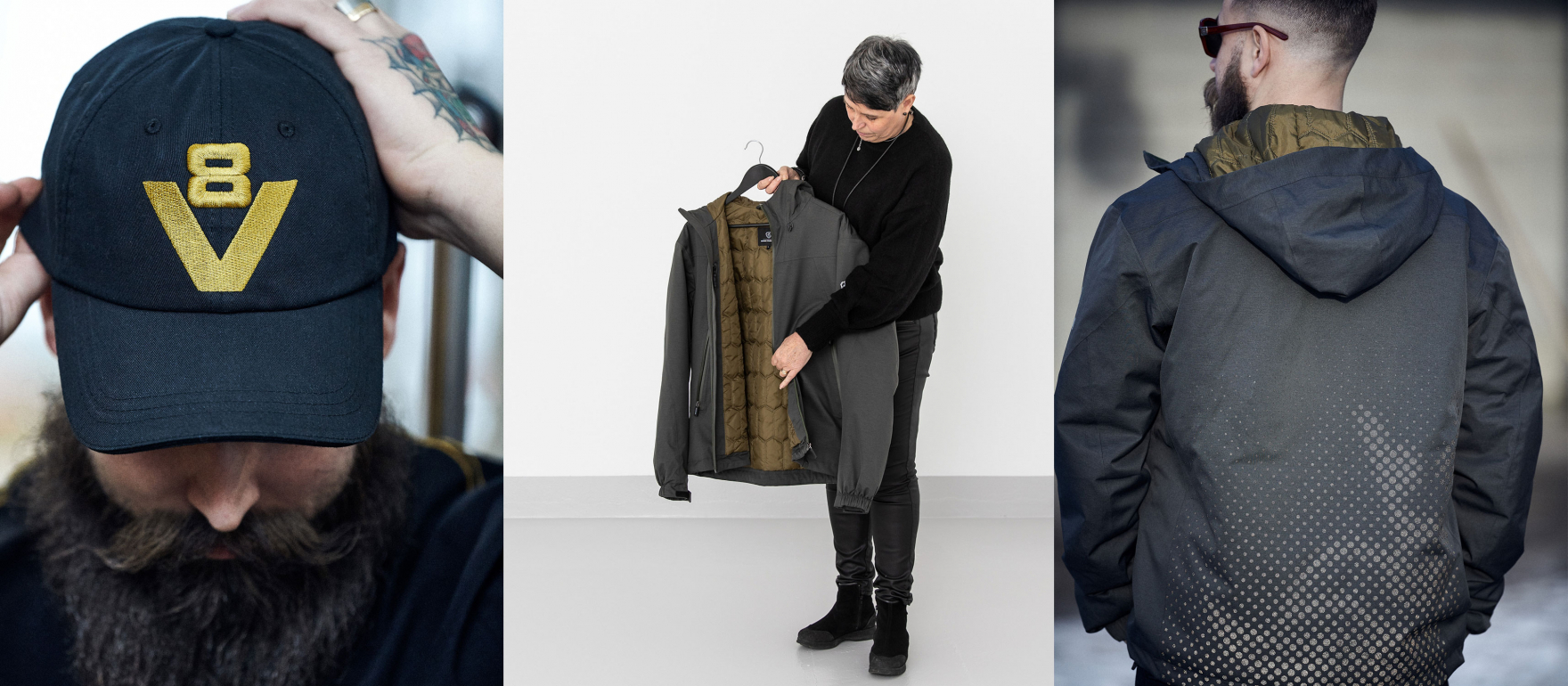
Sustainable thinking in clothing for truckers
4 JULY 2019
At Scania, not only trucks, but all products are developed with great consciousness. The proud heritage and values are things that shine through from the start. The design process is well-defined and it does not matter if you are a designer of a new truck, a t-shirt or anything else, the process of developing the products is thorough.
One of the key aspects to the authenticity of Scania product design is that all the company’s designers work in the same department. When additional expertise is needed, external consultants are asked to contribute with their knowledge. They show the same care when choosing buttons for a shirt or leather for a watch strap as when refining a nut or bolt to gain a couple of decimals in fuel efficiency.
Design from scratch
When designing new clothing, it’s always from scratch, the same way new trucks are designed. The process is like any fashion brand, with visits to fashion fairs to be inspired by material, shape and colour. This is then adapted to fit the Scania brand. “We start off with a sketch and then we carefully select the pattern and what colours and material to use,” says Susanna Hansson, Product Manager for Scania Truck Gear. The work continues with several tests, the same procedure as you would with a truck.

Three R:s towards a sustainable wardrobe
- Reduce – Think again before buying something. Do you really need it? Will you use and cherish it for a long time? If you need a new outfit for a special occasion, try to rent or borrow something instead. Buy second-hand as a first choice. If buying a new product, look for responsibly produced items made from recycled or organic materials.
- Reuse – Make sure to take good care of your clothes and accessories and they will last longer. Air them instead of washing. Polish your shoes to keep them in good condition. When something becomes worn or torn, mend it yourself or take it to the tailor or shoemaker. When you are done with something, give it to friends and family, sell it through second-hand stores or donate it to charity.
- Recycle – If it has reached the end of its lifetime, make sure to dispose of it in a responsible way so that the material can be recycled and taken care of.
Clothing based on user insights
To find out what the customers are looking for, the designers spend time with drivers in the truck to get the right feeling and inspiration. “Everything we do is based on user insights, what the customer needs and wants. We constantly refine and improve our products with the help of our drivers.“ It could be things such as size, design, colour and material. “It is essential to know the target group, and we are very much engaged in the user experience.”
Sustainable thinking
But it’s not enough to only fulfil the wishes from customers. It needs to be done in a way that is sustainable. Hansson is constantly looking into different alternatives when it comes to materials. “We use organic cotton and recycled materials, even made of coffee grounds, in our garments. Jackets are a best-seller, and all our clothes are made with sustainability in mind.”
The knowledge about the origin of fabrics is based on facts. “It’s important to be able to trace things as far back as possible, all the way back to the cottonfield if need be.”
Cooperation to meet ambitious goals
Since it’s by working together that things move forward, Hansson and her colleagues at Branding Products are always keeping an eye out for new partners, whether it is a supplier, or other companies in the business. It’s more than moving things forward. To co-operate on different levels makes it possible to meet the ambitious goals in sustainability. “We have only started this journey. It has no end. In a way, that’s very exciting since we always find new and better ways to handle our products.”




